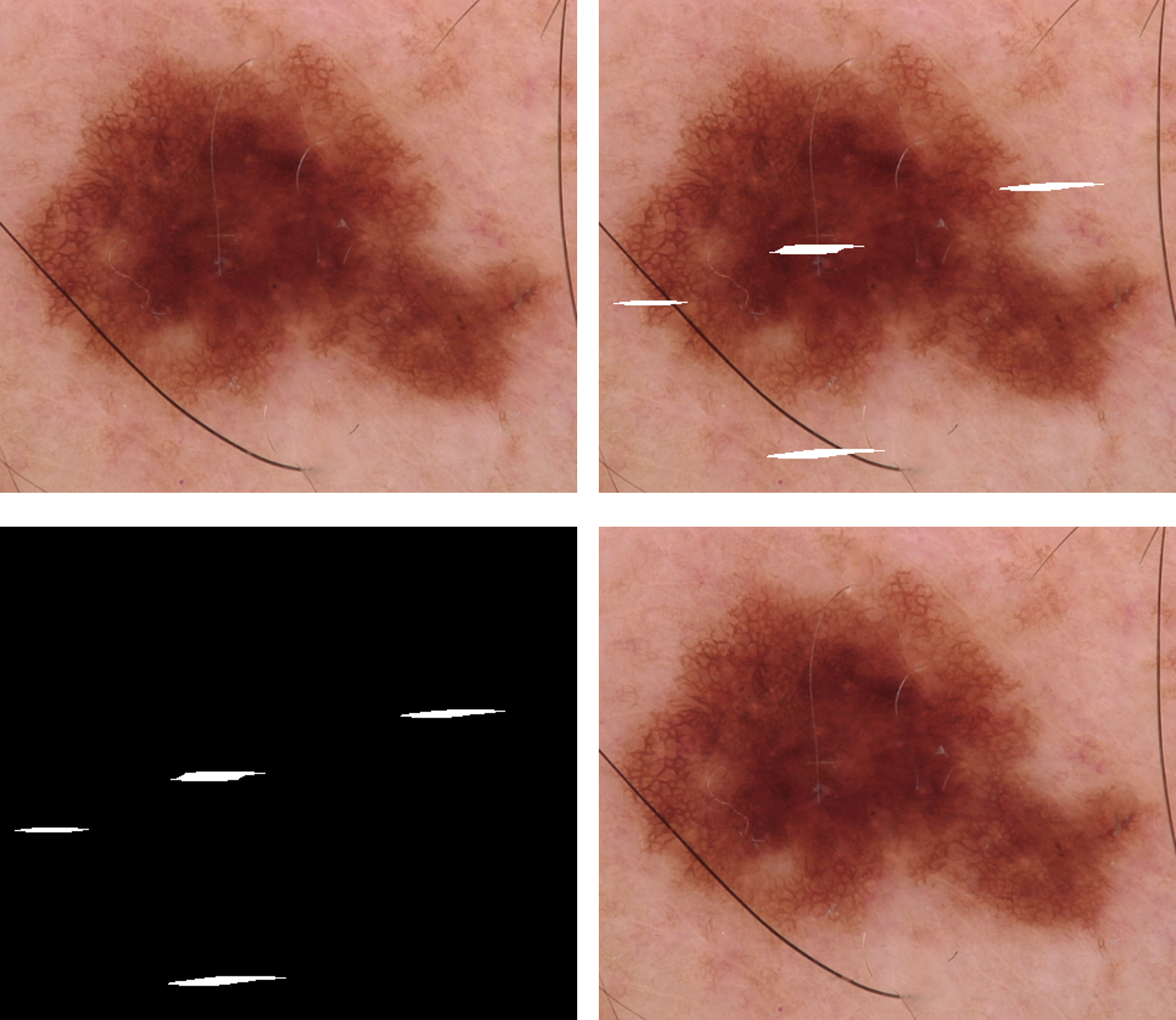Image inpainting is the technique of reconstructing of missing portions in an image in an undetectable way, restoring both texture and structure.
There are many varied applications for it, such as restoration of damages photos or film, removal of objects, removal of red-eye in photographs, removal of stamped date or writing on images.

Fig. 1 An example of applying image colour transfer [1]. Top left: original image. Top right: overlay of original image and missing pixels mask marked in white. Bottom left: mask of missing pixels marked in white. Bottom right: image result of applying inpainting [1].
The method [1] is well suited for removal of small and medium size holes. It fills missing information by doing a search of similar patches around the region of missing pixels and imposes the constraint that the inpainted region is similar to known samples from the original image.
In more complicated scenarios where there are large missing holes in an image, deep learning methods (CNN and GAN based) give better results. For an effective inpainting, these networks have to be trained on a large number of images similar to the ones to be inpainted.
Author: Gabriela Ghimpeteanu, Coronis Computing.
Bibliography
[1] Ignacio Ramírez Paulino, and Ignacio Hounie, Image Inpainting using Patch Consensus and DCT Priors, Image Processing On Line, 11 (2021), pp. 1–17.
